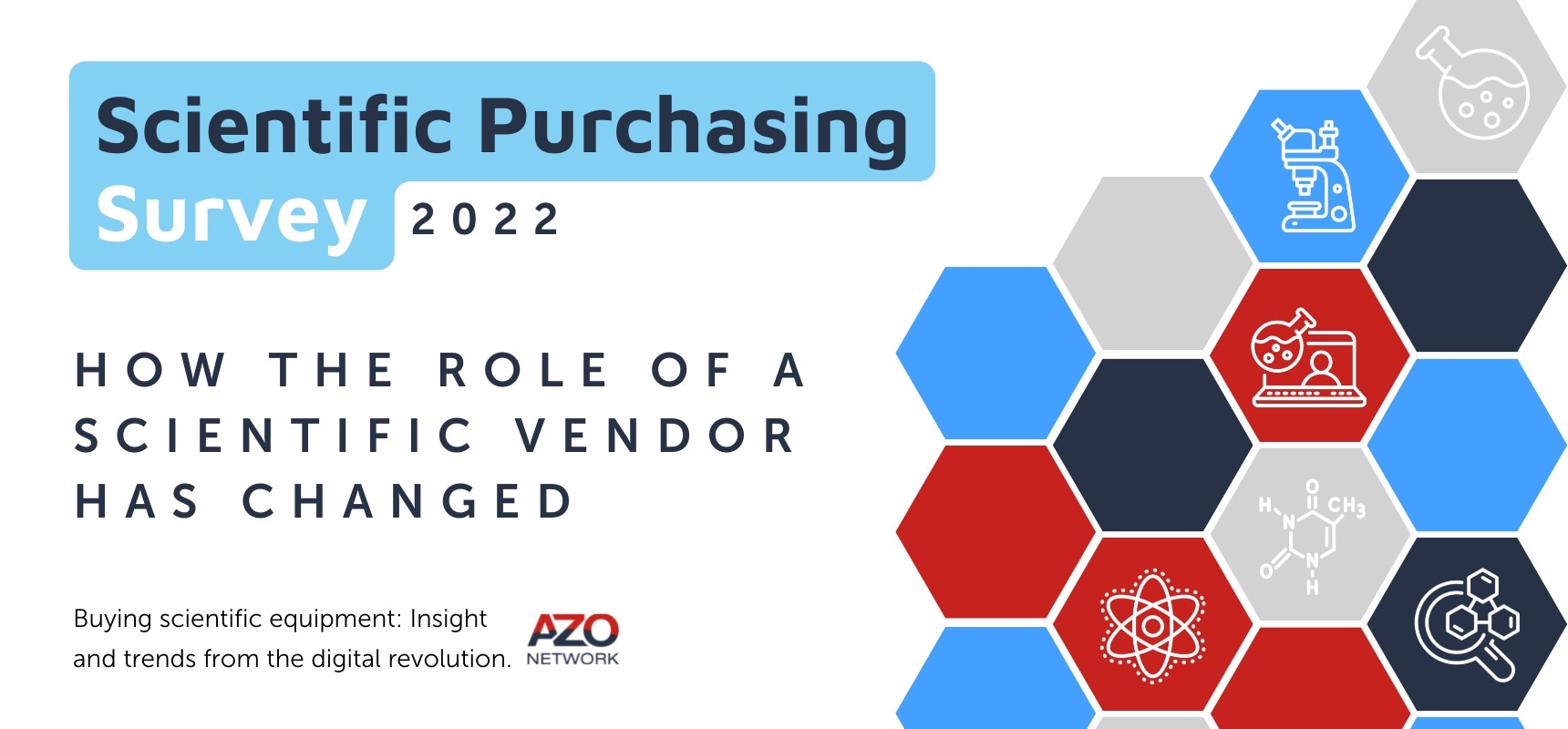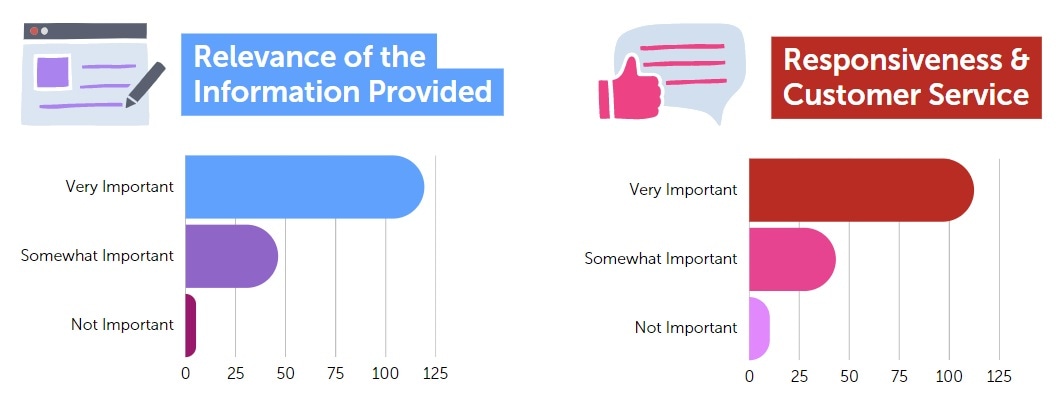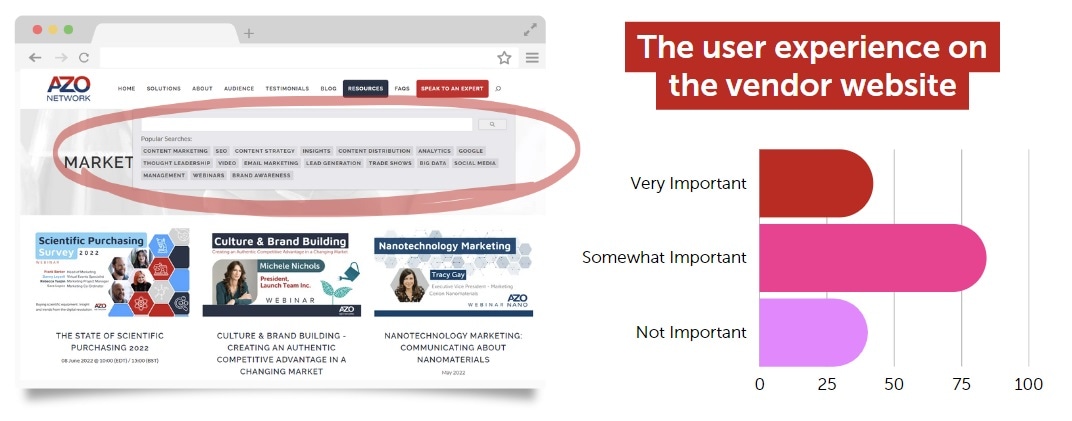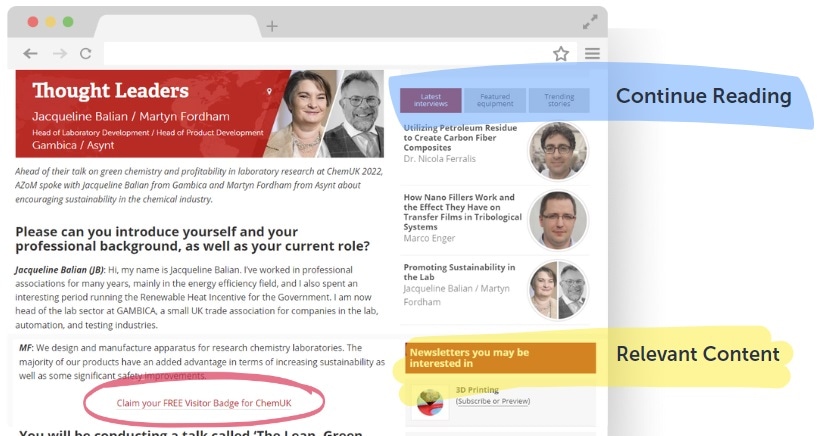
In our recent market report, The State of Scientific Purchasing 2022, we surveyed 172 scientific purchasers to delve into what is important to them when purchasing.
Read the report here
This blog will look at how the role of the scientific vendor has changed in 2022—focusing on what your customers want from their purchasing experience.
Our data suggests that customers prefer to shop around, with 60% of respondents using a new vendor for their most recent purchase; this means the market is more competitive than ever, with an 11% increase from 2021. Those who stuck with an existing vendor have done so due to the content they consumed and excellent customer service.

An overwhelming 87% of those who chose to work with the same vendor again ranked customer service and relevant information as Very Important factors.

How do you ensure that your customers see the right content on your website?
Web design is essential. With all age categories finding the manufacturer’s website useful in their purchasing decision, you should ensure that your website is easy to navigate when a customer is searching for a specific solution.

Easy fixes include having a search bar linking keywords in your site and a strong internal linking structure. When a customer lands on a relevant interview or white paper, how easily can they navigate to additional related content?
Adding relevant links on your pages allows your customer to easily navigate through to a video testimonial, product page, or relevant blog post that guides their purchasing journey with as little friction as possible.

Consider how long you spend on a single Google search to find the answer to a question, your information needs to be accessible and straightforward, or your audience will not spend the time to find it themselves!
How do you show the most relevant content in your customer’s journey?
As your customer moves through your content, ensure that they are exposed to the most relevant type of content to them. We split content into three categories: awareness, consideration, and decision making, to move the customer along their purchasing journey.

Awareness content is your broadest content, written to attract customers and gain brand awareness. For example; a thought leadership article.
Consideration content helps you to segment customers from your broader audience. Include multiple calls to action to capture the data of interested parties. For example; a webinar.
Decision-making content is meant for your prospective buyer; they know your product can benefit them, but they still need that final push to make a purchasing decision. For example; testimonial videos.
You can easily separate these content types on your website by linking awareness content to consideration pieces, consideration content with decision making, and so on to keep your audience moving within your sales funnel.
Outside of your website, how do you get your customer to engage with relevant content?
Choosing your most engaging and informative content pieces, such as articles, white papers, and interviews, can be difficult. If these are all available on your website, use AZoIntel Analytics to see which pages have received the most traffic and engagement. Consider the bounce rate and time spent on these pages as well. This should give you a list of content that your audience wants to engage with.
Once you feel confident with your chosen content, look into hosting these on relevant websites, such as the AZoNetwork sites, to reach new audiences.
Visit our scientific content marketing guide
Digital marketers invest a lot of resources in content creation, but less effort goes into distribution. A lot of content will remain relevant for several years and, if optimized thoroughly, can continuously drive leads, sales, and revenue. That is why it is important to consistently distribute content through your owned, earned, paid, and social channels.
AZoNetwork helps scientific organizations to get their content in front of our highly engaged and extensive audiences. We do this by publishing to our sites and promoting through email newsletters and social media.
As marketers, how do we ensure that our company gives excellent customer service?
Customer feedback surveys are a great starting point to improve your customer service levels. Find out what your customers think using survey software such as Survey Monkey, Typeform, or Mailchimp, which connect directly with most CRMs.
The insight gained from your existing customers about service levels, what they found useful, and what they would change gives you a firm idea of what potential customers might be looking for.
Surveys also give an opportunity to share this feedback company-wide, to provide positive feedback where it is due, and make changes where necessary.
Listen to The State of Scientific Purchasing
Watch The State of Scientific Purchasing